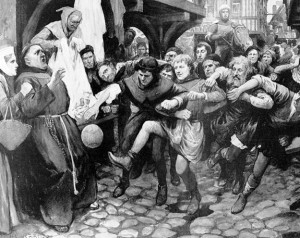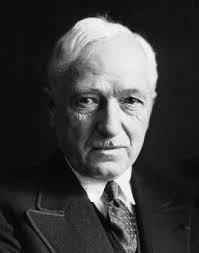Football, the not so beautiful game, is easily the most popular team game in the world. The games in the World Cup competition in 2006 were watched by a total of more than 26 Billion people, whilst the Final became the most watched single sports event ever. Thanks to Television – a crucial part of the rise of football’s popularity – this one game was watched by 715 Million people around the world. This is far more than the numbers who watch the Olympic Games.
However popularity comes at a price. Multi-national companies are willing to pay huge amounts to be able to advertise to such a mass market, and the enormous sums flowing into FIFA (the International Federation of Football Associations) has led to serious allegations of bribery and corruption. At the same time, the bloated salaries of the best players means a tiny number of the richest clubs being able to completely dominate the other clubs in many countries. Football has become a victim of its own success and its glory days may well be coming to an end.

All this is a far cry from the origins of football. A form of football without formal rules has existed for Centuries. In the Middle Ages, teams of men would sometimes “play” for hours on a field miles wide, or through the streets of a town. The only rule was that to win, the ball (a blown up pigs bladder) must reach one end. Once there the game was won. Teams could be of any size and the ball could be carried as well as kicked. Fighting was an essential part of the game. Football was not for the faint-hearted.
It was England that started the idea of turning this excuse for a fight into a formal game played on a pitch of certain size with equal sized teams, a set time for the game and a referee whose decision was final. These formal games started at Public Schools from about 1815 to encourage team spirit, fair play and physical fitness. In 1863 the English Football Association was started and football clubs began to appear. Famously football was then exported to the British Empire and other countries.
The History of football in Cyprus is a typical example. Canon Frank Newham started the English School in Nicosia in 1900 and soon after introduced football (along with other English sports) into the curriculum. The game quickly spread to other schools and before long local clubs were being formed. In 1934 the Cyprus Football Association was formed and in 1948 Cyprus joined FIFA. Today football is easily the most popular sport in Cyprus, as it is in many countries of the world.
From the 1930s some clubs in Cyprus have been strong supporters of particular political parties and there have been clashes between rival fans. This is by no means uncommon. Political, ethnic or religious groups in many countries support particular clubs. This tribalism reminds us that modern football reflects its origins as a war game between rivals.

The very first International game took place between England and Scotland in 1872. It was a goalless draw. Despite this less than encouraging start, FIFA was formed in 1904 to organise international football matches – interestingly at first England had little interest in playing European countries and did not finally join until 1946. In the early years International football matches were part of the Olympic Games. It was in 1930 that Jules Rimet (pictured), then President of FIFA, introduced a separate World Cup tournament. Just 13 countries took part. The World Cup Trophy is of course named the Jules Rimet cup in his honour.
After World War 2, and particularly with the coming of television, interest in the game and the Tournament vastly increased. Much of the increase in interest has come from the spectators and viewers – the growth in the number of players and clubs has been much slower. The first World Cup tournament to be televised was in 1954. As the number of countries wanting to take part increased, a first round of qualifying matches had to be developed. By 2010 more than 200 national teams took part in the hope of reaching the final 32.
What started as a way to teach public schoolboys self-discipline, loyalty and teamwork has developed into a vast industry worth Billions, now tainted with stories of corruption. Perhaps it is time it returned to its origins.
Article by Wally Oppenheim








